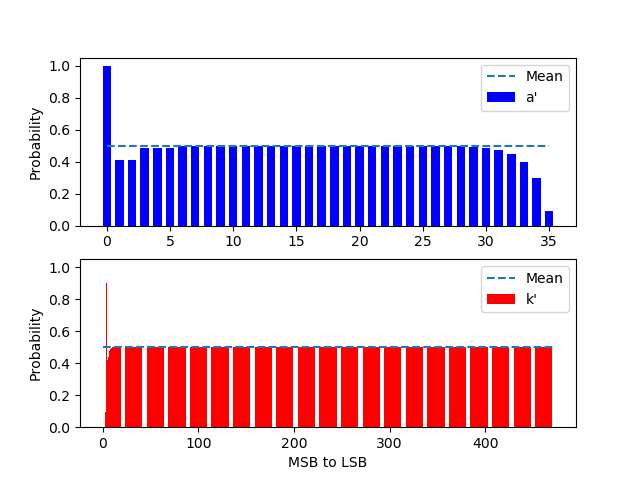This is the implementation of the paper Return of the Coppersmith attack.
The implementation is in python 2.7 and uses the Howgrave-Graham code from RSA-and-LLL-attacks.
For the detection of vulnerable keys, the code from the original authors of the paper is used (detect.py) crocs-muni
PR's welcome!
$ python roca.py <path to key> -j <number of cores>
$ python optimization.py <path to key> -j <number of cores>
$ cd src
$ cp ../test/test_roca.py .
$ python test_roca.py
The optimization is based on an analysis of properties observed from real keys exported from affected card (Infineon JavaCard SLJ52GCA150). The parameters a' and k' turn out to have a lower entropy than stated in the original paper.
a' is fixed at the MSB and biased to be even, This is used to shrink the bruteforce range and speedup the attack.
$ sbatch slurm.sh <path to key>
data/512.pem -> Vulnerable RSA 512-bit key
LICENSE -> APACHE 2.0
README.md -> This file
requirements.txt -> Python 2.7 requirements
HPC/optimization_hpc.py -> modified attack implemetation for HPC
HPC/slurm.sh -> SLURM start script for the attack
HPC/split_iteration.py -> helper for SCRUM
src/optimization.py -> Optimized ROCA attack
src/params.py -> Used to calculate the parameters
src/roca.py -> Non-optimized attack
src/roca.sage -> Pure sage version of the attack
src/detect.py -> crocs-muni
test/test_roca.py -> Test the attack



